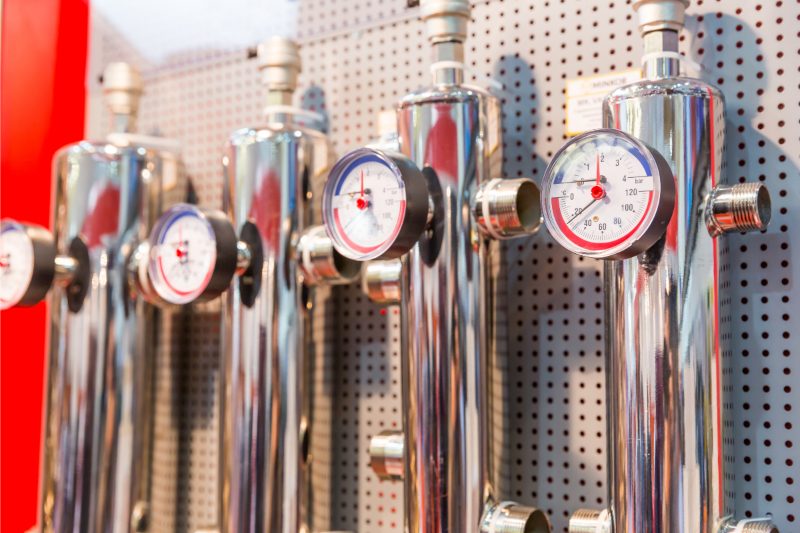Hydraulic separators are fundamental components in contemporary hydronic heating and cooling systems, designed to enhance efficiency and protect equipment. Their primary role is to separate or “decouple” the primary circuit, which usually contains the heat source, from the secondary circuit that distributes heating or cooling throughout a building. This separation ensures that each loop can operate independently, maintaining stable flow rates and temperatures without interference.
When integrated correctly, hydraulic separators help maintain balanced pressure conditions between circuits, which is crucial for achieving optimal system performance. In complex systems with multiple zones, pumps, or heat sources, they prevent hydraulic conflict — a condition where one pump’s flow rate influences another, leading to fluctuating temperatures or noise. By maintaining equilibrium, these devices contribute to smoother operation and consistent heat distribution.
The Functionality of Hydraulic Separators
At their core, hydraulic separators serve as neutral zones within a heating or cooling system. They act as buffers between the supply and return lines of the primary and secondary circuits. When flow rates differ between these circuits, the separator allows each side to function as if the other were not present, ensuring that demand changes in one loop do not affect performance in the other.
In heating systems, for instance, the boiler or heat pump (the primary side) may be designed to operate at a constant flow rate for maximum efficiency. Meanwhile, the secondary circuit — feeding radiators, fan coils, or underfloor heating — might experience variable flow as thermostats and valves open or close. Without a hydraulic separator, these fluctuations could cause instability, reduced heat transfer, or even equipment strain.
Modern hydraulic separators often integrate additional functions such as air and dirt separation. Air trapped in a hydronic system can cause noise, corrosion, and reduced efficiency, while debris and sludge can block pumps and heat exchangers. By allowing air bubbles to rise and collect at the top and heavier particles to settle at the bottom, a hydraulic separator helps maintain a clean and efficient system. This self-purging capability reduces the need for additional components such as air vents and dirt filters, simplifying maintenance and improving reliability.
Benefits of Hydraulic Separators
The inclusion of a hydraulic separator in a hydronic system provides a range of advantages that extend beyond basic pressure balance.
- Enhanced Efficiency:
By decoupling the primary and secondary circuits, hydraulic separators enable each pump to operate at its designed flow rate. This reduces unnecessary energy consumption and ensures optimal performance from the heat source and distribution network. - Improved Comfort and Control:
In multi-zone buildings, maintaining stable temperatures can be challenging. Hydraulic separation allows independent operation of circuits, so individual areas receive precisely the heating or cooling they require without influencing others. This leads to more accurate temperature regulation and improved occupant comfort. - Reduced Maintenance Requirements:
Air and dirt are among the most common causes of inefficiency and breakdowns in hydronic systems. A separator that also removes these impurities prolongs the lifespan of pumps, valves, and heat exchangers, preventing corrosion and blockages. Over time, this translates to fewer service interventions and lower maintenance costs. - Simplified System Design:
Because a hydraulic separator performs multiple roles — separation, air removal, and dirt collection — it often replaces several standalone components. This simplification can reduce the overall cost of installation and the amount of pipework needed, creating a more compact and efficient design. - Quieter Operation:
Hydraulic separators also help minimise pressure fluctuations and flow noise. Systems operate more smoothly, making them particularly valuable in residential and commercial environments where comfort and acoustic performance are important.
Applications of Hydraulic Separators
Hydraulic separators are found across a wide range of heating and cooling applications.
Residential Systems:
In homes with underfloor heating, radiators, or mixed systems, hydraulic separators maintain proper flow balance between circuits, ensuring even heat distribution and consistent comfort.
Commercial Buildings:
Larger systems with multiple air handling units, fan coil networks, or variable speed pumps rely on hydraulic separation to prevent one circuit’s operation from disturbing another. This is particularly important in offices, hotels, and hospitals, where system reliability and temperature stability are critical.
Industrial Settings:
In manufacturing or process environments, hydraulic separators help protect sensitive equipment from flow instability. They maintain constant operating conditions for chillers, boilers, and heat exchangers, contributing to continuous and efficient operation.
Selecting the Right Hydraulic Separator
Choosing the appropriate hydraulic separator depends on several factors, including system size, design flow rate, operating temperature, and the number of circuits. Engineers or system designers typically perform calculations to determine the ideal separator volume and connection size. A unit that is too small may fail to maintain proper separation, while an oversized one could lead to unnecessary cost and space use.
In systems where water quality or air ingress is a concern, selecting a model with integrated air and dirt separation features can provide added protection. It is also essential to position the separator correctly — usually on the return side of the primary circuit — to maximise performance.
Installation and ongoing maintenance should follow best practice guidelines, including regular inspection of air vents and dirt collection chambers to ensure the separator continues to function as intended.
The Role of Hydraulic Separators in Modern Heating and Cooling
As energy efficiency and system longevity become increasing priorities, hydraulic separators play a vital role in maintaining both. Their ability to stabilise flow, improve heat transfer, and reduce maintenance demands makes them indispensable in modern hydronic design.
They support the operation of boilers, heat pumps, and renewable energy systems alike, enabling engineers to create flexible, balanced systems that deliver consistent comfort while conserving energy. Understanding their function and importance is key to achieving reliable, efficient, and long-lasting performance in any heating or cooling installation.
